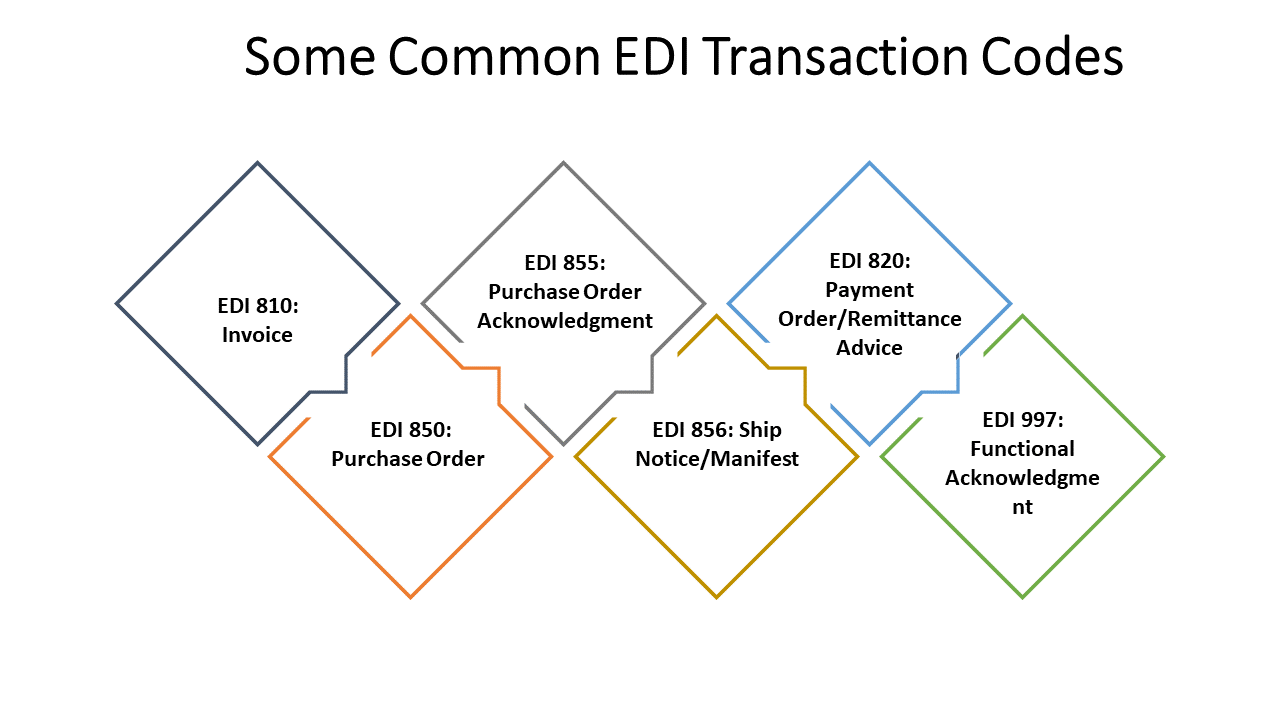Table of Contents
A cross-functional supply chain project is required to implement EDI, and the company’s relationships with its network of business partners are impacted by EDI deployment. It affects departmental communications internally as well. EDI helps the company’s businesses undergo a digital transformation by dematerializing interactions. At a compound annual growth rate of 12.5%, the size of the global market for Electronic Data Interchange (EDI) software is expected to increase from $1.98 billion in 2023 to $4.52 billion by 2030.
When a business implements EDI (Electronic Data Interchange), it automates business relationships between partners and removes repetitive and needless data entry. This move is intended to secure and quicken the commercial exchange cycle while also reducing administrative costs and increasing productivity.
Commercial relationships with suppliers, customers, and business partners are impacted by this change. EDI solutions also help the organization with its digital transition by automating business procedures and getting rid of paper.
What is EDI & How do I plan for its implementation?
IBM defines EDI as a “standard electronic format that replaces paper-based documents such as purchase orders or invoices”. By automating paper-based transactions, organizations can decrease errors and save time.
Information is transferred straight from one organization’s computer program to another through EDI transactions. The location and sequence of data in a document format are specified by EDI standards. With these automated capabilities, sharing data is now easier and faster than with paper papers or other antiquated techniques that might take hours, days, or even weeks.
Industries now share a variety of document types—including purchase orders, invoices, quotes requests, loan applications, and more—through EDI connection. Usually, these companies are trade partners in their supply chains and business-to-business (B2B) networks, regularly exchanging goods and services.
Our Industry-Leading EDI Solutions Will Help You Stay Competitive
How to Plan for Its Implementation?
Implementing EDI can be challenging for certain businesses. Keeping up with the constantly changing regulations, standards, and updates from the government is one of the reasons. Because it must take into account the intricacies of global business needs, it is likewise intrinsically complicated. In a B2B network, for instance, each trading partner may have different needs. Because each organization’s formatting requirements are different, many outsource EDI solutions.
Effective EDI implementation requires a few fundamental prerequisites, skills, and resources, whether done internally or externally. An efficient EDI implementation should take into account, in addition to elements like consensus on document types, secure transmission techniques, and required hardware and software:
Software for translation or mapping
An essential step in the deployment of EDI is mapping, which makes it easier to convert data between formats and guarantees system compatibility between various trading partners. For example, let’s say that two companies, A and B, use different ERPs, CARGOLINK and SAP. SAP outputs data in the IDoc format, whereas CARGOLINK creates output in the positional file format.
These disparate formats make direct communication between these systems impractical. In order to bridge the gap, EDI mapping converts the IDoc file into a positional file and vice versa. Mutual understanding between the various ERPs is made possible by this translation process, which essentially promotes smooth communication.
Business analysts from both organizations will work together to create Mapping Requirement Specifications (MRS) in order to efficiently construct these maps.
Capabilities to envelop or de-envelop in batches
These features facilitate the wrapping and unwrapping of transactions by senders and recipients, hence supporting large batches of EDI messages. The transactions can then be categorized into multiple divisions or business areas of a trading associate.
Mechanisms for routing messages
Routing methods are needed to filter messages for distinct groups and send them to the right targets after a message has been de-enveloped. To ensure that the message is formatted correctly for its intended recipient, message transformation could also be necessary.
Trading Partner Agreement or TPA
TPA provides communications and business protocols between trading partners, clarifies terms and conditions, and creates standards for commercial papers. The implementation partner starts the critical process of enrolling trading partners after the requirements are finalized. These partners are organizations that plan to exchange business documents utilizing EDI standards. Your EDI implementation partner is in charge of setting up the inbound and outgoing connection channels at this point, making sure they perfectly match your partner’s EDI operational model.
In order to create a smooth connection and guarantee compliance with the particular EDI standards used by your trading partners, this procedure entails careful setup. The implementation partner works with you to make sure that your company can effectively exchange important papers while respecting the customs and preferences of each trading partner.
Intensive Monitoring
In order to guarantee a seamless transition and to detect and address problems before they have a substantial influence on operations, hypercare monitoring is crucial in the early post-deployment phases. Consequently, developers will keep an eye on the flow of document exchange, accuracy, and time window for EDI transactions, making sure that EDI systems operate accurately and effectively. When hypercare monitoring is implemented, they will
- Find and fix any irregularities, mistakes, or processing or transmission issues with data.
- Sort and prioritize problems according to how they affect important processes.
- Send serious problems to expert teams so they may be handled right away.
The implementation is deemed successful when the EDI system performs optimally and efficiently fulfills business requirements, at which point ongoing support and maintenance services will be rendered.
Common challenges in EDI deployment
Since there are numerous processes involved, installing an EDI system both internally and with all of your trading partners can be difficult. Businesses frequently grossly underestimate the time and cost needed for EDI deployment, making onboarding a drawn-out procedure. But how you respond to these difficulties could mean the difference between being able to conduct business with your partners or not.
The following are some of the most typical EDI problems and implementation difficulties we encounter:
1. Complexity of Integration
Most EDI service providers are adept at establishing connections between internal systems and applications. However, the addition of contemporary B2B eCommerce raises the complexity of integration. Your company requires a smooth, business process-oriented solution, for instance, to link your front-end ordering systems to your back-end systems (such as an ERP, WMS, or TMS). Your firm will also need externally facing EDI (and API) solutions to meet the evolving needs of your business partners as supply chains and digital ecosystems increase. As a result, your company is currently managing more integrations overall and interfacing with more systems.
2. Lack of Scalability Foundation
Companies with agility are adaptable. When it comes to EDI implementation, this typically means that your supply chain can accommodate a wide range of standards (such as ANSI X12, EDIFACT, etc.) and EDI transmission protocols (such as FTP, SFTP, HTTP, OFTP, AS2, etc.) while also being able to onboard new trading partners fast. One of the most frequent EDI issues is getting this fundamentally correct, especially since many solutions don’t support a variety of standards and protocols and EDI solution providers in USA frequently underestimate how long it takes to onboard trading partners.
3. Security of Data
Particularly in the modern day, data security is a very delicate topic. You frequently exchange important, private data with your business partners through EDI deployment. Data and information security must therefore be a component of your EDI security strategy for the benefit of you, your partners, your clients, and their clients. It is essential to handle, encrypt, and store all parties’ data appropriately.
4. Mistakes and Exclusions
Reducing data mistakes brought on by human operations is one of the key advantages of system automation. You can save time and money by using an EDI system that flags purchase orders and invoices for resolution when it finds input errors, duplications, and other irregularities.
5. Insufficient Options
On the market, there are practically hundreds of EDI services. All stakeholders in your organization should be involved in this crucial strategic decision to choose the best vendor for your needs, as choosing the incorrect EDI provider option can exacerbate the implementation issues you are attempting to resolve in the first place.
6. Legacy Solutions
Because it is less expensive, legacy technology is frequently preferred by businesses, particularly those who are deploying EDI technology for the first time. The technology, however, is much behind more recent and contemporary options available on the market. Modern EDI solutions tend to offer considerably more features and capabilities than legacy technology, so your organization won’t be performing at its best.
For instance, outdated technology frequently performs worse, is more prone to mistakes, has higher system outages, and supports fewer protocols. As a result, it gives competitors using more recent technologies an advantage and may cost your organization commercial chances.
7. Various Approaches
Sometimes, after the implementation of EDI solutions businesses can realize that the solution is unable to meet their demands. Because of this, businesses tend to switch to new EDI solutions or add new EDI solutions into their system to meet different needs. Adding more solutions not only raises the overall cost, but the extra software adds complexity to your digital ecosystem.
Your entire company is at risk if you are unable to transact business effectively and in real-time via digital means with clients, partners, shippers, and other parties—that is, if you are having problems with EDI deployment.
A Step by Step guide to EDI deployment
1. Establish your needs
Make sure you know exactly what you need from your EDI service from the beginning. It’s also critical to confirm that your ERP can manage automotive data, such as responding to call-offs, generating ASNs, and managing “self-billing.” Even though the majority of automakers have solutions pre-configured for selecting EDI providers, you will still need to verify everything your EDI needs to be prepared for.
- Which procedures need to be discussed? ASNs, orders, and invoices? What more is there?
- Will it be necessary for you to send data just, receive data only, or both at once?
- How many partners are you going to need to work with?
- Will your business need to integrate EDI with other systems? Which ones?
- Do your clients have certain expectations about norms or procedures? In addition to EDIFACT, VDA, and ANSI X12, other protocols include OFTP/2, AS2, X.400, SFTP, RosettaNet, and others.
2. Select a Team
You can only really get aid handling your EDI implementation services from a top EDI provider. Make it clear which internal employees can work on the project and what you will be requesting of any outside suppliers in the interim. Assign responsibilities and make it obvious who is in charge of making decisions. You might consider outsourcing as your next option if you wish to maintain a small team size.
3. Outsource or In-House
It is essential that you make a crucial decision right away regarding whether to manage on premise EDI or through an EDI outsourcing solution. Although there are benefits and drawbacks to both of the two approaches, using EDI solutions and services is undoubtedly growing in popularity as a practical and effective solution.
4. Select an EDI partner
As stated earlier, one of a company’s essential procedures is EDI deployment. Having top EDI support services that can assist and are accessible during the first stages of implementing your new solution, as well as after it has been launched, is therefore crucial. When you make your decision, keep the following considerations in mind:
- What kind of background does the provider possess? Do they operate in your industry?
- Is this partner using software from another company, or do they have their own solution?
- Can they incorporate EDI into other systems?
- What is the process for handling system updates?
- How does this partner respond to project expansions and new requirements from automakers?
- What is the cost of the EDI solution that they provide?
5. Include it in your IT infrastructure
EDI deployment is useless if it is not integrated with your IT infrastructure. Errors may only be removed in this way, and unnecessary manual copying cannot be avoided. Additionally, it will guarantee that information is transferred automatically and seamlessly in the event that client requirements alter and your production process needs to adapt.
6. Create maps (or leave it to professionals)
You must map individual documents and the items within them to ensure seamless communication. This is due to the possibility that each system and client will have a unique message structure. By mapping, you can make sure that the same things are being read into each message and system at the appropriate locations. Creating maps is often the responsibility of specialized teams with mapping skills. Here, the in-depth information provided by your EDI consultant is invaluable.
7. Test, then proceed to launch
EDI Testing comes last and should preferably be done with real data. You might still find a few little mistakes in this stage that were hidden during configuration and programming. Conducting testing of the system prior to its official launch serves as an additional assurance that no issues will arise throughout operational life. After confirming that every test has completed as planned, all you need to do is start the system and start utilizing automated data interchange in your supplier/customer chain.

Benefits of deploying EDI in an organization
An automated technique for electronically transferring business documents and information across computer systems is called Electronic Data Interchange, or EDI. Because EDI software is accurate, efficient, and reasonably priced, businesses have been using it more and more over the years. According to an industry estimate, up to 86% of businesses utilize EDI for supply chain management. Furthermore, 86% of companies exchange papers with their retail partners via EDI.
Your company will gain a lot from implementing new technologies in EDI, including quicker processing times, fewer errors, more productivity, better supply chain management, and higher customer satisfaction. McKinsey found that industry leaders might realize up to 6% higher operating profits by improving customer experiences via EDI deployment.
Enhanced Productivity
You won’t need to conduct any manual data entry, document printing, or mailing since EDI software will automatically exchange business papers between trading partners. This method is more accurate, quicker, and less prone to error. In general, it helps firms save money and time. By eliminating the need for human data entry and document processing, EDI software solutions frees up employee time for other crucial responsibilities that might improve the company. Employees will have more time to concentrate on solely productive work as a result, which helps to enhance production.
Costs Saving
Reducing expenses related to paper-based procedures, such printing, storage, and shipping, is one of the main advantages of using EDI software for your company or organization. Apart from that, EDI is intended to assist companies in avoiding expensive chargebacks and even fines for failing to comply with trading partner regulations.
Better Management of the Supply Chain
EDI software is made to improve visibility, regulate inventory levels, shipment timetables, and order fulfillment, and enable real-time communication and collaboration between organizations, particularly trade partners.
Businesses will be able to better manage their supply chain, save lead times, and increase customer satisfaction using this processing method.
Increased Customer Satisfaction
With the help of EDI software, companies can reply to orders and questions from customers as quickly as possible, giving them precise and timely information about product availability, order status, and shipping tracking. These are a few of the best ways to raise customer satisfaction levels so that your companies can forge closer bonds with clients.
Enhanced Cash Flow
Because EDI software shortens the time required to process invoices and obtain payment from trading partners, it will enhance and boost your company’s cash flow. By lowering the possibility of late payments, this procedure will assist companies in enhancing their financial performance.
Enhanced Security
Sensitive company data is always shielded from unwanted access, interception, and tampering thanks to the use of secure protocols by EDI software during data transmission.
Improved Data Management
EDI also assist in data management and provide tools so they can follow and keep an eye on business transactions in real time. Businesses can swiftly detect and resolve issues like order discrepancies or delivery delays that may arise during the transaction process by using EDI systems.
For big businesses, EDI deployment makes it possible to establish standards across trading partners so that advantages are routinely realized. Following EDI provides smaller businesses with more integration with larger companies that have bigger finances and more clout.
Step Into a Future of Effortless Business Chats And Efficient Workflows
Future Trends in EDI Deployment
- Cloud-Based EDI: The move to the cloud is like a ship sailing to new lands. Cloud-based EDI offers easy access, better scalability, and cost savings, paving the way for flexible and efficient deployment.
- AI and Machine Learning with EDI: Just like a self-tuning instrument can boost a music show, AI and machine learning can boost EDI system efficiency. Also, they can foresee errors, automate routine work, and streamline tasks, changing how deployments work.
- More Automation: The rise of automation is like a city getting its first self-driving cars. It cuts down manual work, leading to fewer errors, more efficiency, and smoother EDI deployments.
- EDI and IoT: The blend of IoT with EDI is like building a city where everything talks to each other. So, it could transform the deployment of EDI by boosting real-time tracking, improving data accuracy, and making supply chain management more efficient.
The future of EDI deployment, like a trailblazer’s horizon, is full of thrilling prospects. As we move ahead, these fresh ideas and changes promise a new era of efficiency and connectivity. EDI experts in the USA and around the world are getting ready for these shifts.
Start Your Journey to EDI deployment With A3Logics
With A3Logics, get started with EDI. To succeed in the fast-paced business environment of today, one must have optimized efficiency and streamlined procedures. Since EDI enables safe, automated data interchange between trading partners and businesses, it is crucial to achieving the goals.
It can be intimidating to navigate the EDI implementation’s complexity, though. A3Logics, an IT consulting company, is there to assist you at every stage of the EDI deployment, guaranteeing a seamless and effective changeover.
- Expert Consultation: when you hire EDI experts we will evaluate your particular business requirements and offer solutions that are specifically designed to help you achieve your objectives.
- Smooth Implementation: From data mapping and system integration to testing and continuous support, we take care of the complete implementation process.
- All-inclusive Solutions: Among the many EDI services we provide are file format processing, data mapping, error reporting, HIPAA compliance, and many more.
- Enhanced Efficiency: Improve communication throughout your supply chain, cut down on errors, and streamline your data exchange procedures.
- Cost savings: Get a competitive edge, shorten time to market, and minimize human data entry.
- Lower Risks: Make sure that data is accurate, that regulations are followed, and that it is exchanged securely with your partners.
Conclusion
Companies that are looking to improve their supply chain management. Operations and gain a competitive advantage in this ever-changing market landscape, investing in an EDI specialist can be one of the most beneficial decisions.
The EDI managed services have various plus points, which consists of improved data management, better cash flow, and higher competitive advantage, increased efficiency, cost savings, and improved accuracy. For your company to benefit from the numerous and limitless advantages that come with EDI, you must get an EDI software solution right now.
Once you have amazing EDI support working flawlessly for you, you can automate and streamline your business processes, increase productivity, decrease errors, and react to changes in the market and client needs more swiftly and effectively.
Remember that EDI software is a crucial tool for companies looking to stay ahead of the curve and prosper in the face of intense competition.
Take Action Now for a Successful EDI Deployment!






